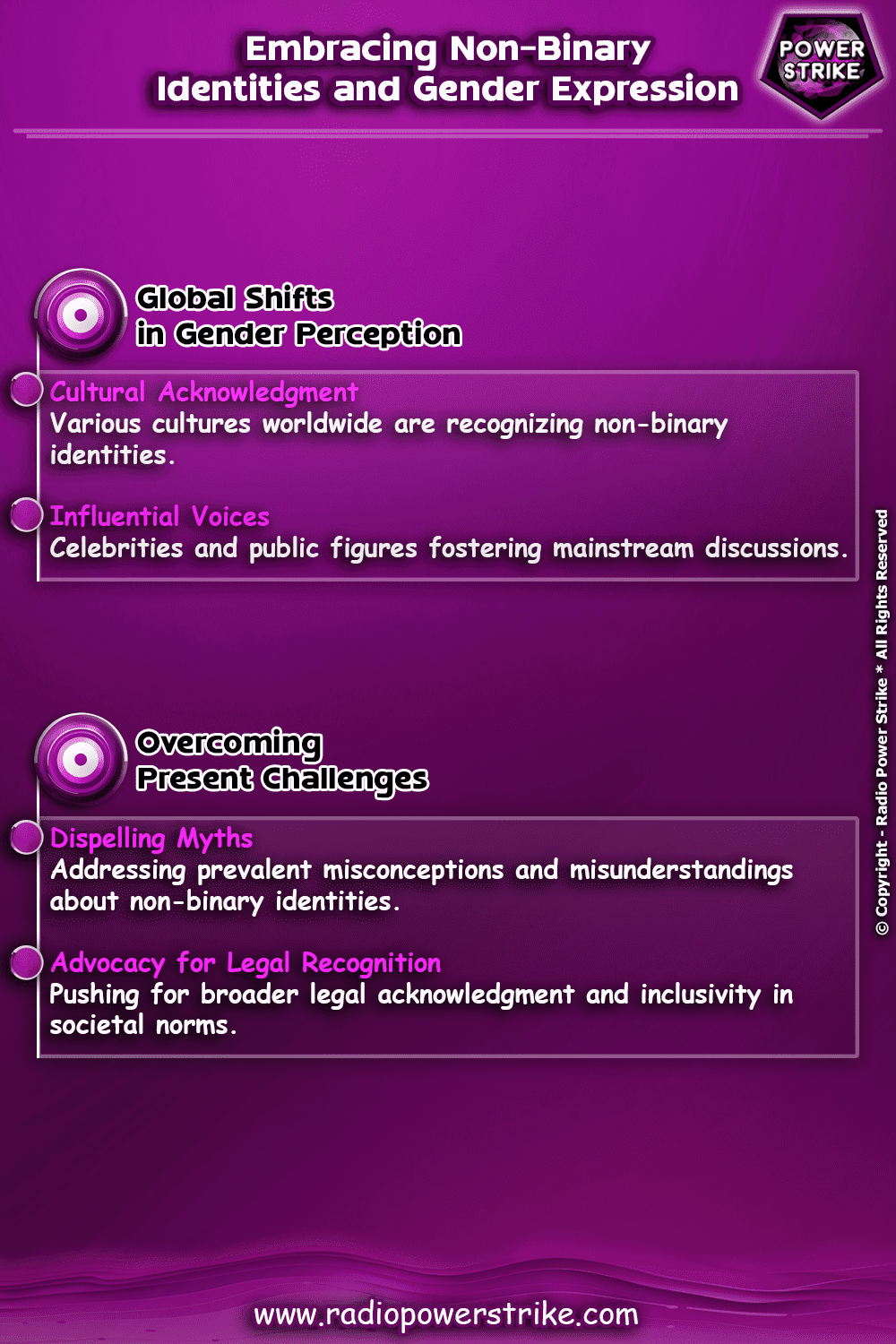Beyond Binaries: Embracing Non-Binary Identities and Gender Expression
Challenging Traditional Norms: The Rise of Gender Diversity

In a world that has traditionally viewed gender through a binary lens, the recognition and acceptance of non-binary identities and diverse gender expressions are revolutionary. As society becomes more inclusive, understanding the spectrum beyond male and female becomes imperative. This article delves into the complexities of non-binary identities, highlighting the importance of embracing and celebrating gender diversity.
The Rise of Non-Binary Awareness
Historically, societies worldwide have categorized individuals as either male or female. However, with the rise of LGBTQIA+ advocacy and education, there’s a growing acknowledgment of identities that don’t fit neatly into these binary boxes. Non-binary, genderqueer, and other terms have emerged to describe identities that may encompass a blend of both genders, neither, or a different gender altogether.
This shift in understanding is not just a Western phenomenon. Many cultures around the world have long recognized non-binary or third-gender individuals, from the hijras in South Asia to the Two-Spirit people among Indigenous cultures in North America. The resurgence of these identities in mainstream discourse is a testament to the global movement towards greater inclusivity.
Moreover, celebrities and public figures coming out as non-binary or genderqueer have further propelled this conversation into the mainstream. Their visibility challenges societal norms and provides representation for countless individuals who may previously have felt unseen.
Challenges Faced by the Non-Binary Community
Despite increasing awareness, non-binary individuals often face unique challenges. Misunderstandings and misconceptions about what it means to be non-binary are rampant. Many non-binary individuals often face the challenge of “coming out” repeatedly, having to explain their identity to those unfamiliar with the concept.
Legal recognition is another hurdle. While some countries and states are beginning to recognize non-binary as a legal gender, many do not. This lack of recognition can lead to complications in areas ranging from passport and ID issuance to accessing appropriate healthcare.
Furthermore, societal expectations and norms can be restrictive. From gendered restrooms to clothing options, non-binary individuals often navigate a world that doesn’t always accommodate their identity. Advocacy and education are crucial to address these challenges and create a more inclusive environment.

Promoting Acceptance and Understanding
Education is a powerful tool in promoting understanding and acceptance. Integrating gender education into school curriculums can help dispel myths and foster a more inclusive environment from a young age. Workshops, seminars, and inclusive policies in workplaces can also play a pivotal role in promoting acceptance.
Representation in media is another crucial factor. Seeing non-binary characters in movies, TV shows, and literature can normalize these identities and challenge traditional gender norms. Moreover, it provides non-binary individuals with characters they can relate to, reinforcing that they are not alone.
Lastly, allyship is essential. Allies, those who support and stand up for the non-binary community, can amplify voices, challenge discriminatory practices, and advocate for change. By standing together, society can move towards a future where everyone, regardless of their gender identity, feels seen and valued.
Embracing non-binary identities and diverse gender expressions is more than just a trend; it’s a necessary step towards creating a world that values every individual’s unique identity. As society continues to evolve, it’s our collective responsibility to ensure that everyone, irrespective of their gender identity or expression, feels accepted, celebrated, and understood.
Glossary
Non-Binary
A term used to describe a gender identity that does not fit within the traditional binary of male or female. It can encompass a range of gender experiences and expressions.
Genderqueer
An umbrella term that includes many different gender identities that are not exclusively masculine or feminine.
Two-Spirit
A term used by some Indigenous North American cultures to describe a person who embodies both masculine and feminine qualities or who occupies a unique gender role in their community.
Hijras
A distinct social and cultural group in South Asia, particularly in India, Pakistan, and Bangladesh, who might be eunuchs, intersex, or transgender individuals.
Allyship
The active practice of promoting social justice, inclusion, and human rights by members of a dominant group, to advance the interests of an oppressed or marginalized group.
Legal Recognition
The process of a government or other official organization recognizing and validating a person’s gender identity, which can affect various aspects of their life, including legal documents and healthcare.
Gender Norms
The societal expectations and practices that dictate how individuals should look, behave, and identify based on their perceived gender.
Frequently Asked Questions
What does it mean to identify as non-binary?
Identifying as non-binary means that an individual does not subscribe to the conventional binary notions of male and female. They might identify with both genders, neither, or occupy a different position on the gender spectrum.
How is genderqueer different from non-binary?
While both terms are somewhat interchangeable, “genderqueer” is often used as an umbrella term that encompasses a variety of gender identities that do not conform to traditional gender norms, including non-binary.
What are some challenges faced by non-binary individuals?
Non-binary individuals often face societal misunderstandings, lack of legal recognition, and difficulties navigating spaces and systems designed with a gender binary in mind.
How can society foster a more inclusive environment for non-binary individuals?
Society can foster inclusivity by promoting education and awareness about non-binary identities, encouraging representation in media, and creating policies that recognize and accommodate non-binary individuals.
What role does media representation play in promoting understanding of non-binary identities?
Media representation can help normalize non-binary identities, challenge traditional gender norms, and provide non-binary individuals with relatable role models, which can foster greater understanding and acceptance.
How can individuals be allies to the non-binary community?
Individuals can be allies by educating themselves about non-binary identities, challenging discriminatory practices, and supporting non-binary individuals in their communities.
What is the significance of recognizing and embracing non-binary identities in today’s society?
Recognizing and embracing non-binary identities is a step towards creating a more inclusive and equitable society where individuals are not confined by rigid gender norms and can express their gender identity freely and openly.

Comments are closed, but trackbacks and pingbacks are open.